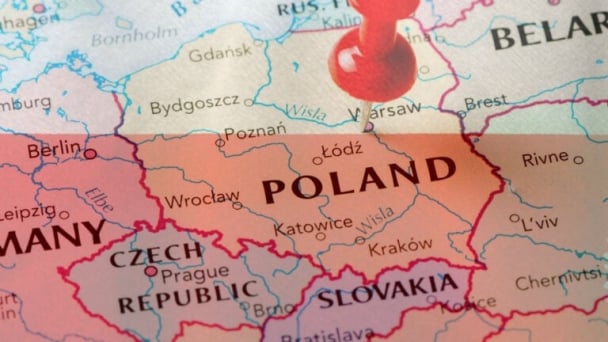June 21, 2025 | 03:37 GMT +7
June 21, 2025 | 03:37 GMT +7
Hotline: 0913.378.918
June 21, 2025 | 03:37 GMT +7
Hotline: 0913.378.918

This aerial photo taken on Jul 5, 2021 shows water being released from the Xiaolangdi Reservoir Dam in Luoyang in China's central Henan province. Photo: AFP
China, like many other countries, has faced several extreme weather events this year. From droughts to floods and bone-chilling cold spells to searing heatwaves, the nation has been grappling with the far-reaching impacts of climate change.
In January, temperatures in Mohe - known as China's North Pole and located just below Russian Siberia - fell to minus 53 degrees Celsius, beating the previous record of minus 52.3 degrees Celsius in 1969.
In stark contrast, Sanbao township in Xinjiang sweltered through a scorching 52.2 degrees Celsius last month, eclipsing the previous record of 50.3 degrees Celsius in 2015. In the capital city, Beijing breached 41 degrees Celsius on Jun 22. It also endured temperatures of over 35 degrees Celsius for 14 consecutive days, the longest streak since records started in 1961.
On the other hand, intense rainfall and flooding have wreaked havoc in multiple cities. These events have not only disrupted lives and livelihoods but also underscore the urgency of global efforts to address environmental challenges.
As China's weather swings from one extreme to another, questions emerge: What underpins these unprecedented variations in temperature and intensity? How can predictive models be refined to better anticipate these fluctuations?
There is overwhelming scientific consensus that a significant part of global climatic anomalies is due to man-made global warming. Three years ago, scientists mostly considered that serious impacts were likely to surface around 2030 and beyond. However, recent events have convinced scientists that their earlier forecasts were underestimates.
Last year, China suffered its worst drought in 60 years. More than two months of drought also caused parts of the Yangtze River Basin to dry up, affecting hydropower generation, forcing major companies to suspend production and halting inland shipping routes. At its peak, about 6.09 million hectares of cropland across China were affected, seriously reducing agricultural production.
The nation grappled with an altogether different ordeal last month - floods. Typhoon Doksuri made landfall on Jul 28 near Xiamen and Quanzhou in China's coastal Fujian province. As the rain battered down, more than 400,000 people were forced to flee their homes. Roofs were ripped off and power lines sparked and burst into flames as the winds thrashed. Floodwaters inundated large swathes of farms and homes, causing direct economic losses of more than 478 million yuan (US$65 million), according to state media outlet CGTN.
The typhoon then proceeded north and caused serious flooding in Beijing. Since records started in 1951, only about a dozen typhoons have passed through Beijing. Typhoon Doksuri poured 744.8mm of rain on Beijing in four days, the "heaviest rainfall in 140 years", reported the Beijing Meteorological Bureau. Beijing's annual average rainfall is 644mm. At least 33 people died in Beijing and 18 are still missing.
To mitigate climatic challenges, Chinese President Xi Jinping in 2020 pledged to reach peak emissions before 2030 and become carbon neutral by 2060.
“Humankind can no longer afford to ignore the repeated warnings of nature and go down the beaten path of extracting resources without investing in conservation, pursuing development at the expense of protection, and exploiting resources without restoration,” he said at the 75th session of the United Nations General Assembly.
The same year, Xi also set a goal to boost its installed capacity of wind and solar energy to 1,200 gigawatts by 2030. When this commitment was made, many sceptics believed the target could not be met. But current indications show China will probably have around 1,270 gigawatts of wind and solar generation by 2025, five years ahead of its 2030 target.
Despite the global attention on China’s rapid advances in solar and wind energy generation, hydropower remains the main generator of its renewable energy. In 2020, hydropower contributed to 16 per cent of China’s renewable electricity generation, followed by wind (6 per cent) and solar (4 per cent).
Hydropower is one of the oldest and largest sources of renewable energy. During the last 30 years, China has accelerated construction of large dams within the country. It has developed new designs and construction techniques as a result of which large dams can be designed and built more economically and quickly than any other country. Its continuous investment has ensured that in terms of dam construction and operation, the country is at least six to 10 years ahead of its nearest competitors.
Pre-2015, China’s main reasons for constructing dams were electricity generation and reliable provision of water for all uses. However, post-2015, it realised that such dams could play major roles in managing extreme hydrometeorological events such as floods and droughts.
A good example is in early August 2020, when the Dadu River Hydrometeorological Centre issued a warning for heavy rain from Aug 12 to 18. Their model indicated that flood peak at Gongzui power station in Sichuan could well exceed 12,000 cubic metres per second. Three days before the flood was expected, significant quantities of water were released from Pubugou Reservoir. As a result, when the heavy flood arrived on Aug 18, the reservoir managed to store 500 million cubic metres of flood water.
Consequently, peak flow from downstream of Gongzui power station was reduced from 12,600 cubic metres per second to 7,500 cubic metres per second, reducing a once-in-a-century flood to an ordinary flood.
This was possible because the authorities managed to develop and use sensors, robots, high-definition pictures and sound, big data analytics, internet of things and mobile internet, to collect, transmit, store and analyse data.
The future is uncertain and difficult to predict, but China is likely to experience more frequent and intense extreme hydrometeorological events. This necessitates continuous support and investment so that effective countermeasures can be devised and taken on a timely basis.
Scientific advances can already explain many of the reasons for extreme hydrometeorological events and where some of the risks and uncertainties lie. At least for some of the events, reasonably reliable forecasts can now be made for when and where they might occur.
For major floods, it is now possible to forecast five days in advance when very high rainfalls are likely to occur in certain areas. With the development of more reliable numerical models and availability of more computing power and data, considerable progress is expected within the next 10 years, and advance flood warnings can be made in terms of weeks rather than days.
Our current knowledge of drought prediction is still in its infancy, however. At present, it is not possible to predict the onset and end of droughts or their severity. We expect at least 15 to 20 years before such predictions can be made.
With continually improving forecasts over the longer term, knowledge required to significantly reduce the adverse impacts of extreme hydrometeorological events will increase as well. We are cautiously optimistic of future scientific and technological developments in China to manage extreme hydrometeorological events.
(CNA)

(VAN) Poultry production in Poland, which has only started recovering from devastating bird flu outbreaks earlier this year, has been hit by a series of outbreaks of Newcastle disease, with the veterinary situation deteriorating rapidly.

(VAN) Extensive licensing requirements raise concerns about intellectual property theft.

(VAN) As of Friday, a salmonella outbreak linked to a California egg producer had sickened at least 79 people. Of the infected people, 21 hospitalizations were reported, U.S. health officials said.

(VAN) With the war ongoing, many Ukrainian farmers and rural farming families face limited access to their land due to mines and lack the financial resources to purchase needed agricultural inputs.

(VAN) Vikas Rambal has quietly built a $5 billion business empire in manufacturing, property and solar, and catapulted onto the Rich List.

(VAN) Available cropland now at less than five percent, according to latest geospatial assessment from FAO and UNOSAT.

(VAN) Alt Carbon has raised $12 million in a seed round as it plans to scale its carbon dioxide removal work in the South Asian nation.